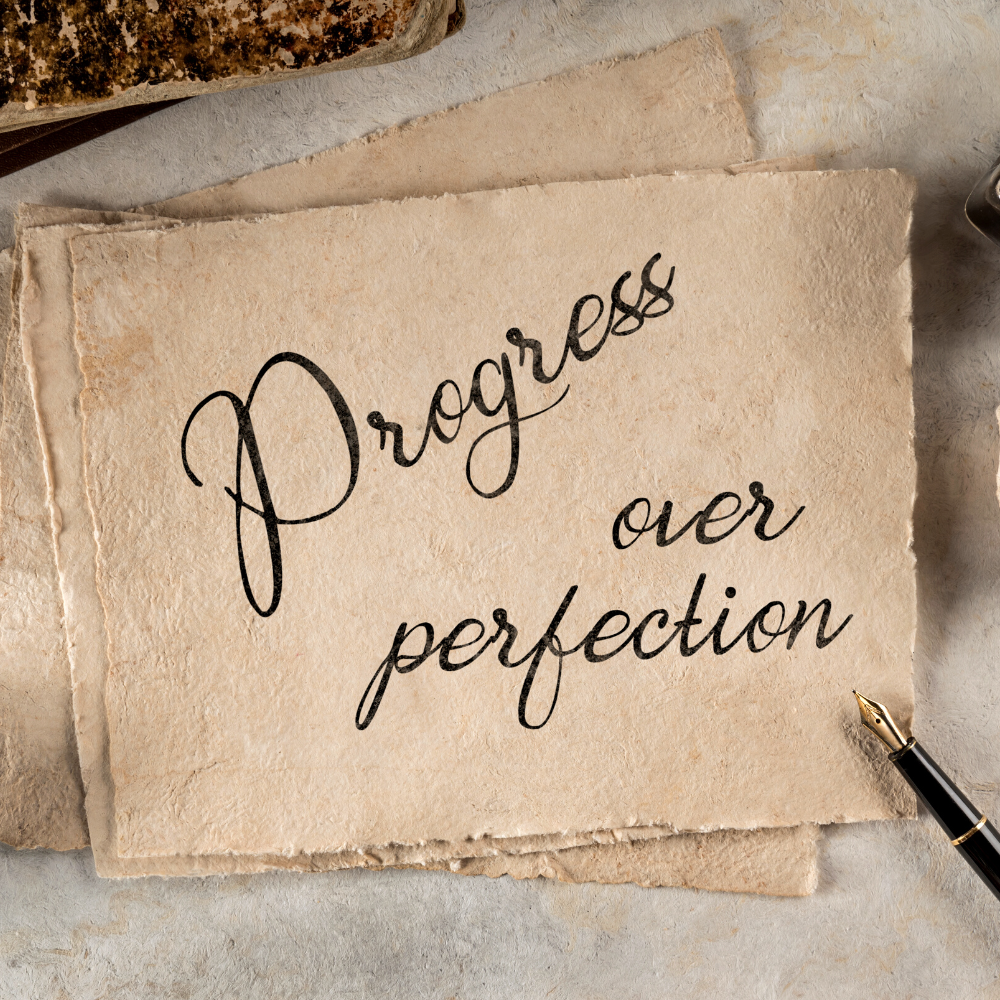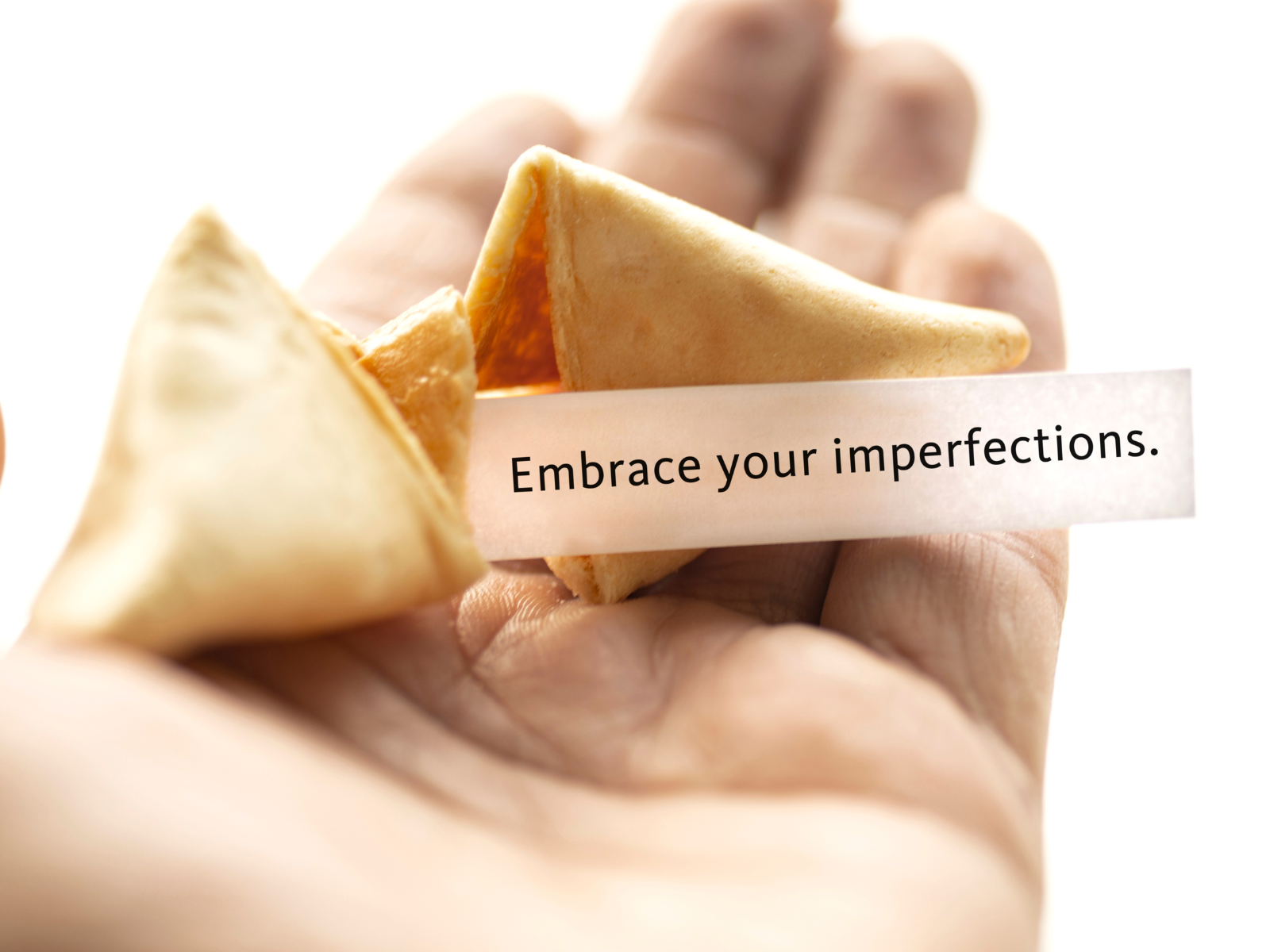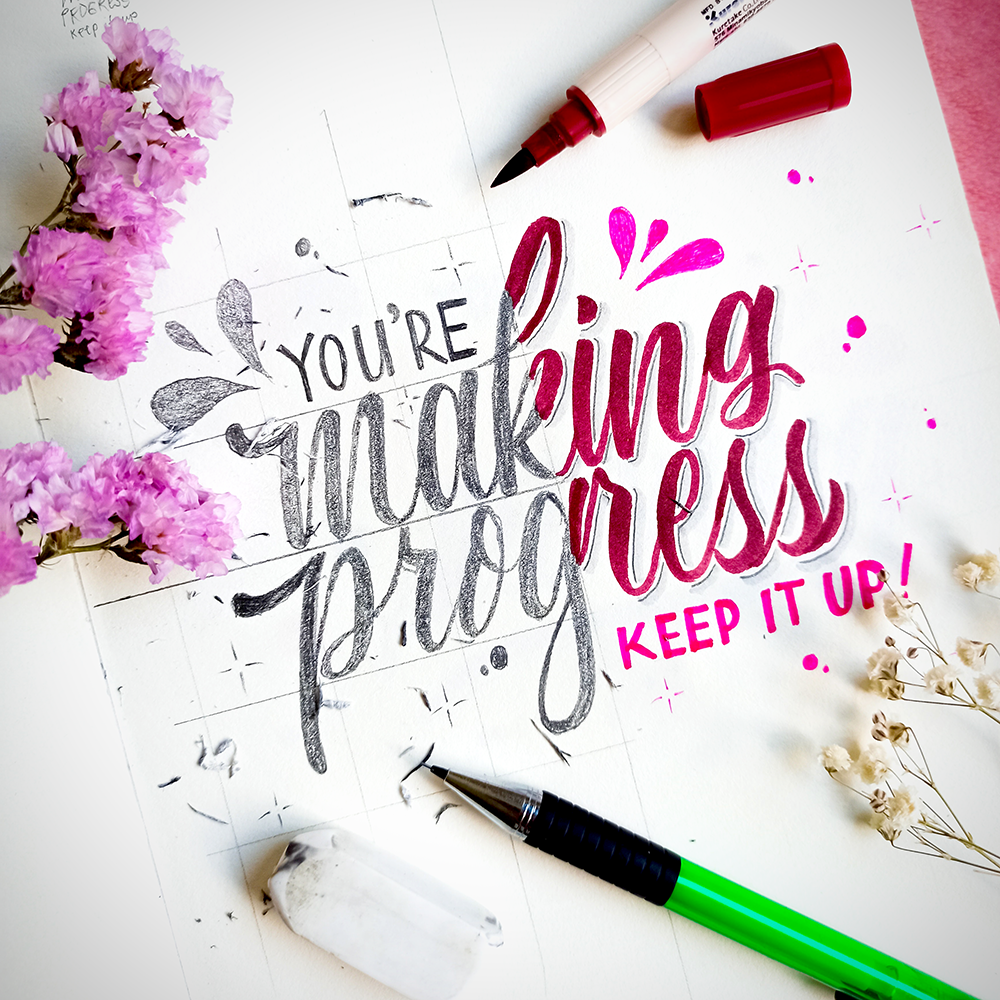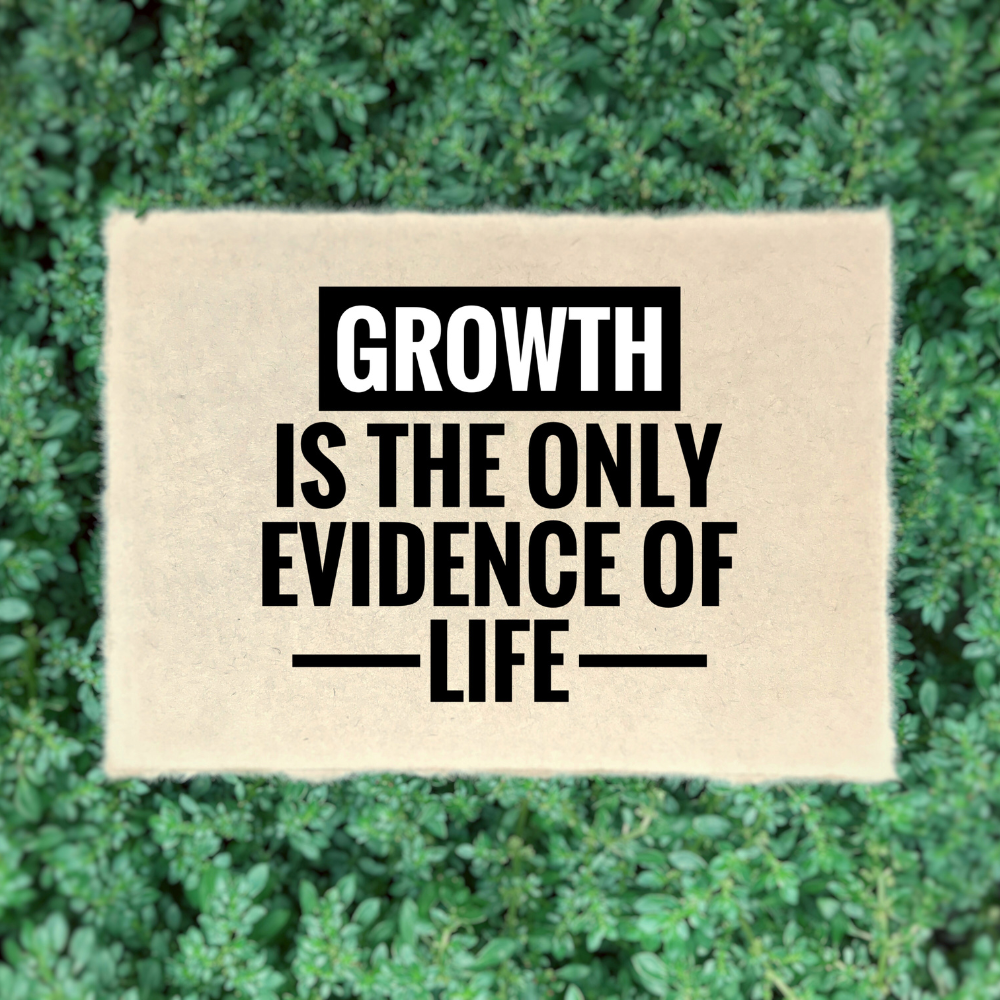Hey there, perfectionists of the world!
We see you, meticulously aligning your color-coordinated sticky notes, and obsessing over that one brushstroke that's just a smidge off.
Perfectionism is often seen as an admirable trait - the pursuit of excellence, attention to detail, and a strong work ethic.
However, when taken to extremes, perfectionism can be harmful and hold us back from fully expressing ourselves.
When it comes to art, the quest for perfection can become a relentless pursuit.
As creators, we often get caught up in the idea that our work must be flawless to be worth something.
But here's the kicker - this relentless pursuit can be more crippling than empowering.
Perfectionism is like that uninvited guest at a party who insists on adjusting your living room décor because "it's just not right".
But is there really a "right" or "perfect" in art?
Let's dive into the messy, imperfect, yet incredibly beautiful world of creativity; it's time for a little heart-to-heart about perfectionism in art.
Buckle up, because we're about to dive into the chaotic whirlpool of creativity, perfection, and how to overcome perfectionism!



Perfectionist's Predicament: "Perfect" Mirage
Perfectionism, at its core, is driven by fear - fear of not being good enough, fear of rejection, or even fear of success.
Whether we're focusing on our art career, personal life, or simply trying to keep our sock drawer organized, we're scared that if our work isn't perfect, it won't be appreciated or accepted.
This fear can paralyze us, making it difficult to progress in our work and stifling our creativity; perfectionism tells us that anything less than perfect is a failure.
This unrealistic expectation sets us up for disappointment and self-criticism when we inevitably fall short of this unattainable standard.
In art, the pursuit of perfection can be especially detrimental because not only does it stifle creativity and experimentation, but it also limits our growth as artists.
Art is subjective, and there is no one "right" way to create; each piece is unique and holds personal meaning for both the creator and viewer.
But here's the truth - perfection is an illusion.
It's an unattainable standard because what may seem perfect to one person could be flawed to another.
As the famous saying goes, "beauty is in the eye of the beholder;" the same applies to art.
Perfectionism is a tricky beast.
It disguises itself as a helpful friend, pushing us towards excellence, only to trap us in a maze of self-doubt and constant dissatisfaction.
Here's a reality check - perfection is subjective.
What may seem perfect to one might be flawed to another.
So, chasing after an elusive standard of perfection in art is akin to running a never-ending race.



The Perfect Storm
We all know that one artist friend who spends hours tweaking a single line on their sketchbook or the writer who can't finish a sentence without using their backspace key.
They're trapped in an endless loop, chasing after the elusive unicorn of "perfect work".
Perfectionism in art is like a double-edged sword.
On one hand, it pushes you to strive for excellence, but on the other, it's like a pesky mosquito that just won't let you be.
It's like being stuck between a rock and a masterpiece!
While striving for excellence is commendable, obsessing over every minute detail can be detrimental to our creativity.
Perfectionism, in its quest for the best, often becomes the enemy of the good.
By setting impossibly high standards, we risk losing the joy of creation and the satisfaction derived from expressing ourselves through our art.
It can lead to a constant state of dissatisfaction, and we may even give up on our art altogether.



The Enemy Within
Perfectionism can be the biggest enemy of an artist.
By striving for perfection, we set ourselves up for failure because no matter how much time and effort we put into our work, it'll never be "perfect".
This constant cycle of striving and falling short can lead to stress, burnout, and even creative block.
Moreover, perfectionism can rob us of the joy and satisfaction that comes from creating.
When we're so focused on making everything perfect, we forget to enjoy the process.
Art becomes a chore instead of a passion.
We may also become overly critical of ourselves, constantly comparing our work to others and feeling inadequate.
This negative self-talk can lead to low self-esteem and a lack of confidence in our abilities.
But it doesn't have to be this way.



The Cost of Perfectionism: Creativity vs Control
Perfectionism starts with the need for control - wanting everything, every little detail, to be just right.
But in art, as in life, perfection is an illusion.
Trying to control every aspect of our creative process limits our creativity and stifles our ability to grow.
It's like trying to contain a wildfire; it may feel safe and controlled at first, but eventually, it will burn out.
Creativity thrives in chaos and imperfection.
By embracing our mistakes and imperfections, we open ourselves up to endless possibilities and allow ourselves to grow as artists.
In the words of artist Bob Ross, "We don't make mistakes; we just have happy accidents."
Embracing these "happy accidents" allows us to let go of perfectionism and focus on the process rather than the end result.
Whether you're looking to start a new project, learn a new technique, continue creating with a group, or simply let go of perfectionism in your art, remember this - imperfection is beautiful.
It's what makes our art unique and gives it character.



Embracing Imperfection: Key to Creative Growth
Okay, so we've established that perfectionism can be a pain in the easel.
So, what's the antidote? Embrace the mess!
Yes, you heard it right.
Art is supposed to be a beautiful mess, an explosion of ideas, emotions, and colors.
Nobody ever made a masterpiece by playing it safe.
So, let your creativity run wild, even if it means making mistakes.
If you want to break free from the shackles of perfectionism and embrace imperfection in our art, practice self-acceptance.
We need to be kinder to ourselves and recognize that our art doesn't define us as individuals.
It's a part of us, but it doesn't determine our worth.
Celebrate small victories along the way, and don't be too hard on yourself for not reaching a certain standard or version of artistic excellence.
Lastly, remember that imperfection is beautiful.
Our flaws make us unique, and embracing them can lead to more authentic and meaningful art.
So, next time you find yourself obsessing over every minor detail in your work, take a deep breath and remind yourself that it's okay to be imperfect.
Embrace the imperfections, and watch your creativity flourish!



The Struggles of Being a Perfectionist
Let's get real for a second.
Being a perfectionist isn't easy.
It can be exhausting, stressful, and at times, downright frustrating.
Perfectionism can be the ultimate creativity killer.
It's like a party pooper that shows up uninvited and doesn't know when to leave.
It saps the joy out of the creative process, turning it into a chore rather than a form of self-expression.
But the good news is that it doesn't have to control our lives.
We can learn to stop perfectionism, embrace imperfection in our art, and keep moving forward.
Here are some tips to help you on your journey towards letting go of perfectionism:
- Set realistic goals: Instead of aiming for perfection, set obtainable goals that push you out of your comfort zone, but don't leave you feeling overwhelmed.
- Embrace mistakes: Don't be afraid to make mistakes. They're an essential part of the creative process and can lead to unexpected results.
- Practice self-compassion: Be kind to yourself and remember that making mistakes does not make you a failure. Treat yourself with the same kindness and understanding that you would show to a friend.
- Celebrate progress: Instead of focusing on perfection, celebrate your progress and artistic growth. Every step forward is worth acknowledging and celebrating.
- Take breaks: Don't push yourself too hard. Take breaks when needed to recharge and avoid burnout.



Breaking Free From the Chains of Perfectionism
So how do we escape this perfectionist trap?
The first step in overcoming perfectionism is acknowledging its presence and understanding its root cause.
Is it fear of rejection, fear of failure, or something else?
Once you identify the cause, you can start working towards overcoming it.
Here are some strategies to help you overcome perfectionism in your art:
- Embrace Imperfection and Your Uniqueness: Your art is an extension of you. Remember that art is a form of self-expression. It's not about creating something flawless; it's about expressing your thoughts, emotions, and experiences. Embrace the imperfections in your work as they make your art unique and authentic. So, let go of the idea of creating something perfect and focus on creating something that's authentically you.
- Practice Mindfulness: Mindfulness can help you stay focused on the present moment and enjoy the process of creating. It allows you to detach from the outcome and focus on the joy of creating.
- Challenge Perfectionist Thoughts: When you catch yourself having perfectionist thoughts, challenge them. Ask yourself if your standards are realistic or if you're being too hard on yourself. Remember, it's okay to make mistakes. They're part of the learning process.
- Set Realistic Goals: Instead of aiming for perfection, aim for progress. Set small, achievable goals for your art and celebrate each achievement. This can help boost your confidence and motivation.
- Seek Support: Don't hesitate to seek support from fellow artists, mentors, or therapists. They can provide valuable insights and strategies to help you overcome perfectionism.
- Receive Constructive Criticism: Instead of viewing criticism as a personal attack, try to see it as an opportunity for growth. Consider feedback from other artists and use it to improve your skills rather than solely listening to your harsh inner critic.
At the end of the day, it's important to give yourself permission to let go of perfectionism.
It may not be easy, but with practice and self-compassion, it is possible to break free from its chains, embrace imperfection in art, and get your creative juices flowing again.
Remember, true growth and creativity come from embracing our unique flaws and imperfections; that's what makes our art truly beautiful!



Embrace the Beautifully Imperfect Journey
Perfectionism is a battle that many artists face, but by understanding its roots and adopting strategies to overcome it, you can free yourself from its grip.
Remember, art isn't about achieving perfection; it's about expressing ourselves and connecting with others through our work.
It's about pouring your heart and soul onto a canvas, a piece of paper, or even a lump of clay.
The next time you find yourself obsessing over a minor detail, take a step back and remember why you started creating in the first place.
Let go of your fears, embrace your imperfections, and let your creativity flow!
Aim not for perfection, but for authenticity, passion, and connection.
After all, it's your unique perspective and style that makes your art truly yours.
So, fellow creators, let's embrace our flaws, our quirks, and all the beautifully imperfect aspects of our art.
Let's create not because we want to be perfect, but because we have something to say.
And remember, in the grand tapestry of creativity, every thread counts, even the frayed ones.
So, to all you perfectionist Picassos out there, loosen up!
Your art isn't meant to be perfect; it's meant to be you.
And trust us, you're pretty darn amazing just the way you are.
Remember, folks, in the world of art, perfectionism isn't just overrated—it's practically non-existent.
So, go ahead, make a mess, create something beautifully imperfect, and most importantly, have fun!



Interested in learning more about the relationship between perfectionism and creativity? Check out IAMLXGEND 's video!
Want even more content about creativity and art?
Be sure to check out all of our creative chronicles!
Eager to explore your creativity?
Check out some of our other articles:
-Overcoming analysis paralysis










